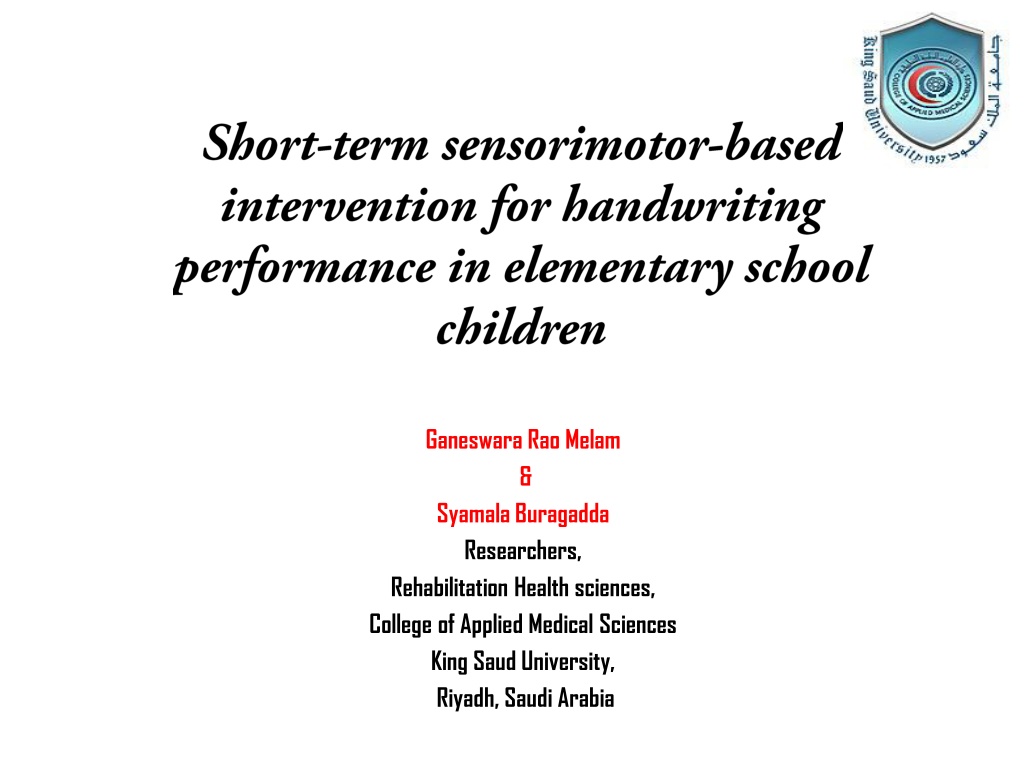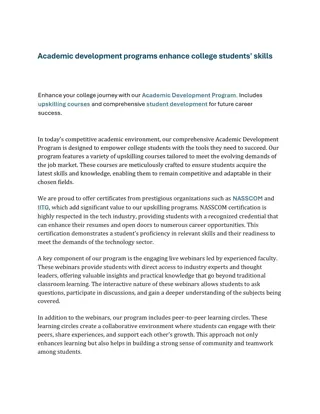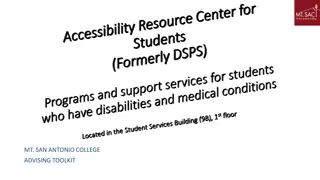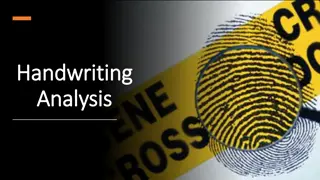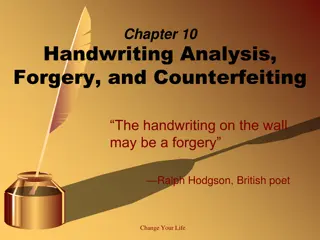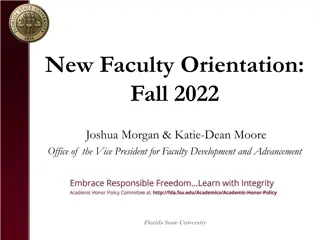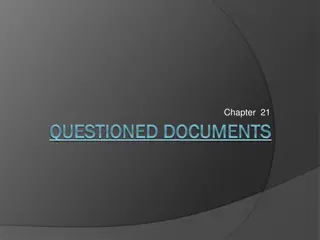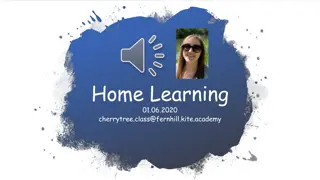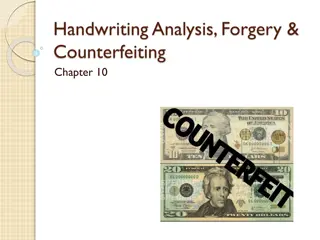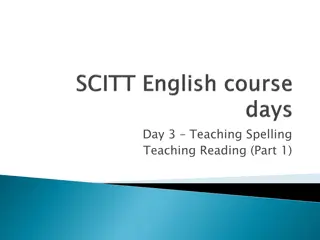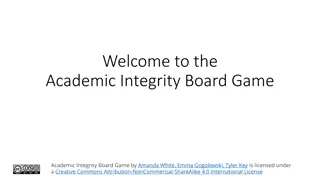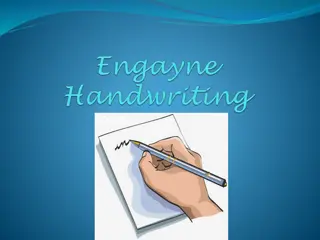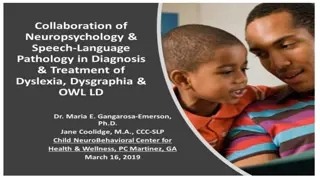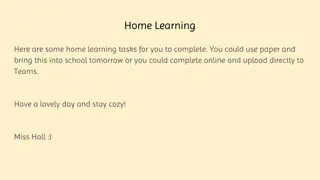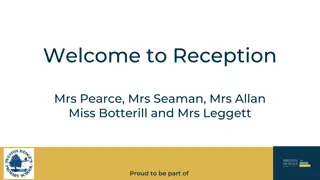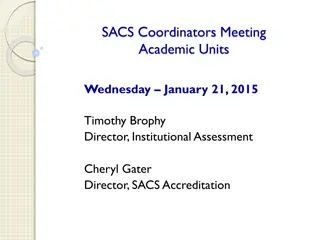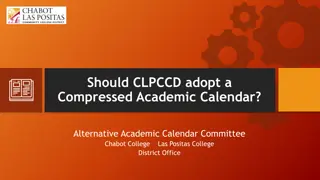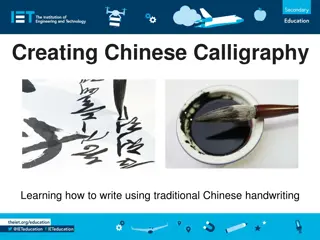Importance of Handwriting in Academic Development
Handwriting is a crucial academic skill that impacts cognitive development and educational success. It plays a significant role in enhancing brain function, developing motor skills, and fostering critical thinking. The decline in handwriting proficiency can lead to academic challenges and affect self-esteem. Research highlights the importance of handwriting in shaping early cognitive abilities and boosting literacy-related brain regions. Cultivating mastery in handwriting can pave the way for academic excellence in various subjects.
Download Presentation

Please find below an Image/Link to download the presentation.
The content on the website is provided AS IS for your information and personal use only. It may not be sold, licensed, or shared on other websites without obtaining consent from the author. Download presentation by click this link. If you encounter any issues during the download, it is possible that the publisher has removed the file from their server.
E N D
Presentation Transcript
Ganeswara Rao Melam & Syamala Buragadda Researchers, Rehabilitation Health sciences, College of Applied Medical Sciences King Saud University, Riyadh, Saudi Arabia
Handwriting Handwriting is an academic skill that allows individuals to express their thoughts and feelings and communicate with others. It is a brain-based skill, not merely a mechanical or motor skill(Richards 2011). The skill of handwriting is also referred to as a graphomotor skill, including visual perceptual, orthographic coding, motor planning and execution, kinesthetic feedback and visual motor coordination.
Why hand writing is important? Children spend 31 60% of their classroom time performing handwriting and other fine motor tasks- Difficulty in handwriting can therefore influence academic achievement, which in turn affects self-esteem An estimate of 25 33% of students are struggling to achieve competency in this skill
Handwriting-forgotten skill The traditional art of letter writing is declining Psychologists and neuroscientists say it is far too soon to declare handwriting a relic of yesteryear (Medwell J 2008). New evidence suggests that the links between handwriting and broader educational development run deep(Berninger 2009)
Developmental Sequence of Handwriting Research states that learning how to write by hand is a necessary early motor exercise for other cognitive and physical skills. It helps develop eye-hand coordination skills and boosts brain development(Saperstein Associates 2012; James and Gauthier 2006; James 2012; Berninger 2012). Handwriting is a foundation skill that needs to be developed early as it affects students reading, writing, language use, and critical thinking.
Handwriting and the Brain Positive impact of handwriting on the developing brain- MRI scans at Indiana University (done before and after letter instruction) found that when children practiced by hand, their neural activity was far more enhanced than those who had simply looked at their letters (Harman James 2010). Significant impact in the areas of the brain related to literacy development (Berninger 2012; James 2012).
Handwriting mastery builds Academic success in all Subjects Children with writing disorders have a tendency towards Lower mathematics achievement Low verbal IQ Increased attention consistently achieve lower marks compared with peers. difficulties and
Remediation of handwriting problems It is common for elementary- school children with handwriting difficulties to receive remedial education from their teacher or be referred to occupational therapy for evaluation and intervention.
Purpose of the study Identify students in school with poor handwriting To evaluate the additive effects of sensorimotor intervention(SM) intervention on the child s handwriting..
Research questions? What are the possible effects of the intervention on specific qualities of handwriting (legibility, form, alignment, size, and spacing) and on speed What would be the possible effect of training in teacher assessment using the Hand writing proficiency screening questionnaire(HPSQ) and grip strength
Methods Research design: prospective, one-group, pretest post-test experimental design Sample: Students in two first grade classes(British International School, Riyadh, Saudi Arabia) for whom English was their first language, but who had no identified educational need, were selected to participate in the study. Excluded from the study- direct intervention for handwriting problems prior to the study, and who missed more than two intervention sessions.
Screening and recruitment of children Thirty-one(31) students (16 boys, 15 girls)- screened using the Minnesota Handwriting Assessment (MHA) Twenty students(21) fulfilled the inclusion criteria for performing somewhat below peers or performing well below peers in at least two components of the MHA. Thirteen(13) students- agreed to participate later two students left the school, and one student left the study before the actual intervention. Finally, 10 students (seven boys, three girls) aged 6 8years (mean age, 77.1 1.45 months) participated in the intervention program
Minnesota Handwriting Assessment(MHA) It was used both as a screening tool and an outcome measure The near-point copy assessment analyzes Rate, Legibility, Form, Alignment, Size, and Spacing. Performance is then judged and classified as: performing like peers (upper 75th percentile); performing below peers (bottom5 25th percentile); performing well-below their peers(bottom 5th percentile).
Minnesota Handwriting Assessment(MHA)- Manuscript & D Nealian style The handwriting sample was scored based on specific directions for each category (legibility, form, alignment, size, and spacing) and rate. Each category was scored based on the error rate with a maximum potential score of 34. Rate or speed was scored by counting the number of letters completed in 2.5 minutes
Handwriting Proficiency Screening Questionnaire (HPSQ) HPSQ was used to identify handwriting deficiency among school-aged children and is appropriate for varied academic and clinical purposes. Non-proficient handwriters were classified score 14- non-proficient hand writers score <14-proficient handwriters
Grip strength A calibrated hydraulic hand-held dynamometer (Jamar hand-held dynamometer), was used to measure isometric grip strength for both the dominant and non-dominant hand.
Procedure Baseline measures: HPSQ, MHA and grip strength The same group of students acted as their own controls Pre and post intervention assessment was done. The Sensori motor (SM)-based intervention group- twice weekly for 5 weeks during school hours Each session lasted for 40 min; -10 min of gross and fine motor warm-up activities -followed by 30 min of SM component activities
Contd Therapists were supplied with a toolbox of games, activity worksheets, equipment. Therapists and teachers were assigned to the stations To monitor students and provide specific feedback, support and instruction as needed. The students rotated through the stations in random order to perform the list of sensorimotor activities
Sensori motor intervention activities Gross Motor Warm-up Activities (5 minutes) Do jumping jacks Do crab walk Perform pushups on floor Chair push-ups Seated student places hands on either side of chair next to thighs. Straightens arms and lifts bottom off the chair Balance on one leg with eyes closed Walk toe-to-heel masking tape line on the floor Fine Motor Warm-up Activities (5 minutes) Rub hands together Squeeze tennis balls Rub hands in circles on the carpet Play with Wikki Stix Build with small Lego blocks String small beads Roll clay between fingers "Walk" fingers up and down the pencil on a
Visual Perception Activities Activities included visual-closure; visual memory, figure ground and spatial relationships work sheets Visual perceptual workbook Visual perceptual games Give the child a drinking straw in one hand and a strand of uncooked spaghetti in the other. Tell the child to look straight ahead, as he brings his hands up in front of his face and slowly slides the spaghetti into the straw. Play balloon tennis, either with rackets or hands Blow some bubbles. Have the child chase and pop them Play concentration, where the child has to turn over cards and find matches Play "What's different? Put 3 things on the table, have the child close his eyes, and then change one. Have the child tell you, which one is different. Use more objects as he gets more skilled Place a covered tray with a dozen or so objects on a table, let the child look at it for 30 seconds, cover the tray, and have the child write down or tell you everything that he remembers Nesting and stacking toys promote pattern recognition, which is critical for learning shapes of letters Mazes, dot to dot, and tracing activities Hide objects in an indoor sandbox: fill a large container full of beans, rice, packing pellets, etc. Hide little toys for the child to find.
Visual-Motor Integration Activities included: Drawing within a large space, such as on a wall chalkboard, dry erase board or easel, helps children learn about the movement involved in the shapes and strokes they are learning. Draw shapes within square boxes for using the attributes of a square as landmarks. For example, cut the box in half by drawing a vertical line through the middle of it, then a horizontal line to make a cross. Drawing diagonals is the most challenging to learn. Play games that involve diagonal relationships such as checkers, Chinese checkers, Tic-Tac-Toe or Connect Four, as examples. Make shapes with sticks (toothpicks, popsicle sticks, Wikki Stix, etc.) for child to trace beside Stringing beads: copy bead patterns or create repeating patterns Dress up dolls Bean bag toss: Make a circle on the floor and ask them to toss the bean bags into the circle. Gradually increase the distance Origami design
Kinesthesia/Proprioception Activities included: Weight bearing Pushing heavy objects (boxes, chairs, benches etc.) Pulling (tug of war) Pressing different parts of hand into clay Pushing fingers into clay or therapy putty Pushing shapes out of perforated cardboard Tearing package or boxes open Playing clapping games Air writing Mystery writing etc
In-Hand Manipulation Activities included: Making ball by crumpling paper Rolling and moving the clay/putty from fingers to palm/making balls Moving coins from coin box to palm Getting a coin of a change purse Hiding a penny in the hand (magic trick) Picking up and bringing a small piece of food into the palm Getting two or more coins out of a change purse, one at a time Taking two or more chips off a magnetic wand, one at a time Playing with marbles
Subject characteristics Characteristic Group Mean age (months) (N=10) 77.1 1.45 Hand dominance Right-8 Left- 2 Gender Male-7 Female -3 Ethnicity Arabic 8 British- 2
MHA scores for within-subjects factors (Manuscript) Manuscript (n=10) Time M SD F (p 0. 05) Rate Baseline Pre-intervention Post-intervention 20 7.77 21.3 3.31 27.4 7.94 3.886 .080** Legibility Baseline Pre-intervention Post-intervention 21 8.52 26.5 7.42 33.7 0.68 22.965 .001* Form Baseline Pre-intervention Post-intervention 17.50 5.29 20.80 5.54 30.80 2.15 61.682 .000* Alignment Baseline Pre-intervention Post-intervention 5.80 6.85 18.00 4.85 30.90 4.31 72.610 .000* Size Baseline Pre-intervention Post-intervention 8.20 8.35 20.20 4.49 32.20 2.74 66.122 .000* Spacing Baseline Pre-intervention Post-intervention 20.50 8.18 23.00 5.85 30.90 3.57 13.183 .005*
MHA scores for within-subjects factors (DNealian) Manuscript (n=10) Time M SD F (p 0. 05) Rate Baseline Pre-intervention Post-intervention 20.60 6.68 25.0 7.71 33.6 1.27 31.954 .000* Legibility Baseline Pre-intervention Post-intervention 26.7 5.58 27.0 6.18 33.8 0.42 15.281 .004* Form Baseline Pre-intervention Post-intervention 22.00 5.01 23.20 4.98 30.60 1.65 25.175 .001* Alignment Baseline Pre-intervention Post-intervention 8.60 7.98 20.00 8.69 29.80 4.94 58.827 .000* Size Baseline Pre-intervention Post-intervention 11.30 8.76 22.20 9.17 32.40 1.51 57.168 .000* Spacing Baseline Pre-intervention Post-intervention 25.50 6.67 25.70 5.36 31.00 1.76 8.288 .018*
Post intervention changes in MHA for Manuscript & D Nealian style Manuscript (n=10) t (p 0. 05) -2.141 .061** Rate -2.951 .016* Legibility -5.752 .000* Form -8.310 .000* Alignment -10.757 .000* Size -4.570 .001* Spacing D Nealian (n=10) -3.459 .007** Rate -3.374 .008* Legibility -3.805 .004* Form -4.889 .001* Alignment -10.757 .000* Size -2.994 .015* Spacing
Paired Samples Test (HPSQ) and Grip strength Characteristics Pre Post (p 0. 05) HPSQ Legibility domain 5.80 3.58 2.90 2.52 .020* Time performance 6.00 3.24 4.00 2.49 .019* Physical & emotion wellbeing 8.50 6.02 3.10 2.81 .012* Total 19.90 9.66 10.00 6.47 .002* Grip strength DOM_GRIP 17.50 5.89 20.50 5.51 .024* NDOM_GRIP 14.00 6.99 18.00 4.22 .022*
Discussion The results of the study showed that short-term training had beneficial effects on MHA scores of rate, legibility, form, alignment, size and spacing in both the manuscript and D Nealian scripts. The teacher perception of student handwriting assessed by Handwriting proficiency screening questionnaire (HPSQ) showed a significant difference in all the domains, i.e., Legibility, performance time, physical and emotional components after the intervention. Apart from the sensorimotor approaches, the additional findings observed such as paper position, writing surfaces, grip strength, and posture were considered. Limitations: convenience sample and size of sample is small, and design is quasi experimental.
References Berninger VW, Richard T, Stock P et al 2009. fMRI activation related to nature of ideas generated and differences between good and poor writers during idea generation. Br. J. Educ. Psychol. Psychol. Monogr. Series II; 6: 77 93 Berninger, Virginia. 2012. Evidence-based, developmentally appropriate writing skills K to 5: Teaching the orthographic loop of working memory to write letters so developing writers can spell words and express ideas. Paper presented at Handwriting in the 21st Century? An Educational Summit, Washington, DC, January 23, 2012 James, Karin Harman, and Isabel Gauthier. 2006. Letter processing automatically recruits a sensory motor brain network. Neuropsychologia 44 (14): 2937 2949. James, Karin Harman. 2012. The neural correlates of handwriting and its affect on reading acquisition. Paper presented at Handwriting in the 21st Century? An Educational Summit, Washington, DC, January 23, 2012.
Medwell J, Wray D(2008). Handwriting: A forgotten language skill? Lang. Educ; 22: 34 47. Richards TL, Berninger VW, Stock P et al(2011). Differences between good and poor child writers on fMRI contrasts for writing newly taught and highly practiced letterforms. Read.Writ.; 24: 493 516.
Acknowledgement Deanship of Scientific Research at King Saud University (research group no RGP-256) British International School, Riyadh Mr Emad Takrouni, B.Sc PT
